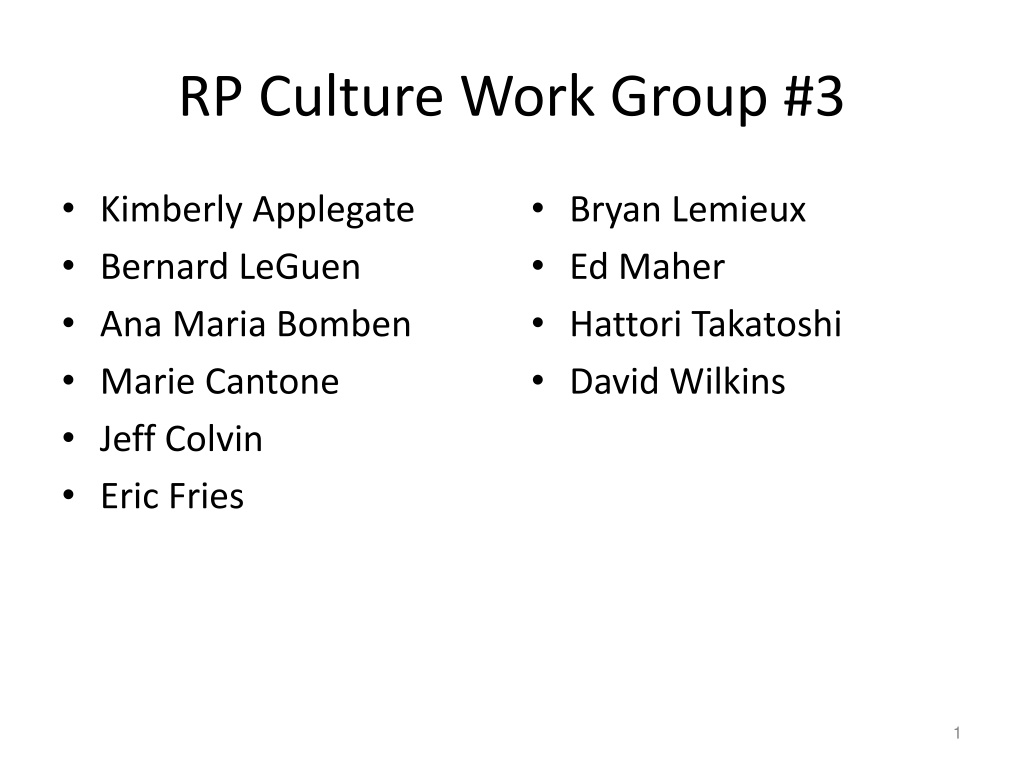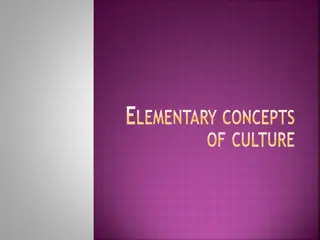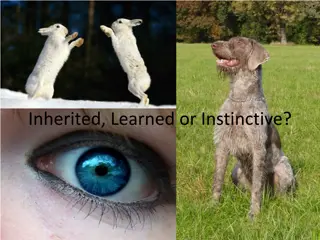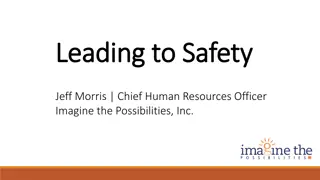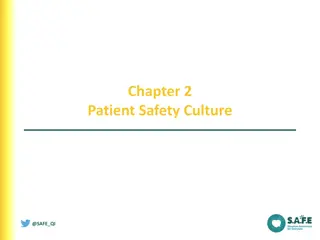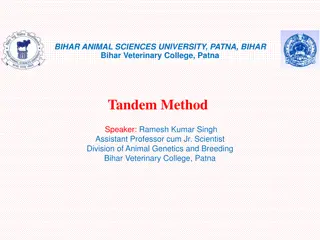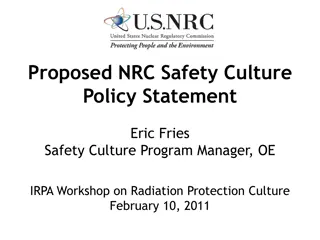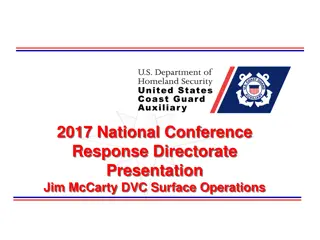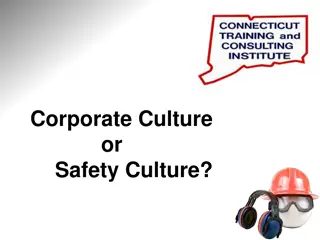Elements of RP Culture and Proposed Safety Traits
This presentation delves into the important elements of RP culture, criteria for success, stakeholder engagement, the role of RP professionals, and the inclusion of regional culture. It also highlights commonalities in knowledge, leadership, behavior, and action across disciplines. Additionally, it outlines proposed safety culture traits such as leadership values, personal accountability, continuous learning, effective safety communications, and a respectful work environment.
Download Presentation

Please find below an Image/Link to download the presentation.
The content on the website is provided AS IS for your information and personal use only. It may not be sold, licensed, or shared on other websites without obtaining consent from the author. Download presentation by click this link. If you encounter any issues during the download, it is possible that the publisher has removed the file from their server.
E N D
Presentation Transcript
RP Culture Work Group #3 Kimberly Applegate Bernard LeGuen Ana Maria Bomben Marie Cantone Jeff Colvin Eric Fries Bryan Lemieux Ed Maher Hattori Takatoshi David Wilkins 1
Presentation Overview What are important elements of RP culture? What are criteria for success and how do we assess it? How do we engage the stakeholders in process of developing RP culture? What is role of RP professionals and prof societies in promoting RP culture? How is regional culture included? 2
Commonality Knowledge, leadership, and behavior, and action (Lochard: Right knowledge, right behavior) Individual and organization --need strong organization (Eric Fries) Elements are the Same across all disciplines 3
Proposed Safety Culture Traits (behaviors) Leadership Safety Values and Actions Problem Identification and Resolution Personal Accountability Issues potentially impacting safety are promptly identified, fully evaluated, and promptly addressed and corrected commensurate with their significance (QA, QI program, audits) Leaders demonstrate a commitment to safety in their decisions and behaviors (managers, too) All individuals take personal responsibility for safety (ethics) Work Processes Continuous Learning Environment for Raising Concerns A safety conscious work environment is maintained where personnel feel free to raise safety concerns without fear of retaliation, intimidation, harassment or discrimination Opportunities to learn about ways to ensure safety are sought out and implemented (knowledge, competence; education, training; sharing, history) The process of planning and controlling work activities is implemented so that safety is maintained Effective Safety Communications Respectful Work Environment Questioning Attitude Individuals avoid complacency and continually challenge existing conditions and activities in order to identify discrepancies that might result in error or inappropriate action Trust and respect permeate the organization (collaboration, teamwork) Communications maintain a focus on safety 4
What are important elements of RP culture? 3 key principles: Justification Optimization Dose Limits 5
Be Aware: Implementation Medical Culture of non compliance in interventional MDs with badges Not well trained to optimize fluoro and then often exceed dose levels and then won t wear badges Suggest using a covenant for all workers in the environment, eg that certain behaviors will be followed (wear badges), this will change culture We may need to address dose levels that now exceed levels of the past as IR procedures have moved from dx to tx. Siloed teams and less clear missions 6
What are criteria for success and how do we assess it? Universal criteria: badge compliance and doses Culture and metrics Policy, Process? Updated regularly? Accessible? (Transparency) 7
What are criteria for success and how do we assess it? Do you audit? Peer audits; eg, using DRLs to compare your performance to national benchmarks Do you support continuing ed for staff? Does RSO have independence from production side of house (eg, MDs, others?) Comment included: avoid blaming but ensure accountability by writing up corrective action plan eg nuclear power industry, tracking and trending Near misses, RCAs, learn from other institution errors; g, NRC event listserv Purchases for safety-related equipment-at leadership level 8
What are criteria for success and how do we assess it? Ensuring QA, QC of existing equipment Is there an event tracking system? Are employees trained to use it? Is it anonymous? What are trends in its use? Ongoing investment in employee safety training RSO and Staff interviews, eg, JCH inspections Does RSO audit actively (and allowed to do so, eg, in hospitals)? Is there a safety comm.? Minutes of these mtgs? Presence of institutional leadership sitting on this committee? Resources allocated to it? Appropriate representation of all stakeholders (eg, strong organization) Certification of competence of QMP, ARRT, MOC of MDs Use of networks (web resources) 9
What are criteria for success and how do we assess it? Recommendation: development of checklist Share best practice with similar sites 10
How to engage stakeholders? Mentoring both on site or remotely via web resources use of IRPA web site, must have language translations (knowledge transfer) Model such as Medecins Sans Frontiers Use of web, societies, listservs, and social networks; local chapters and annual mtgs exchange of info IRPA RP Culture Guideline for engaging stakeholders 8/2008 Engage stakeholders as early as possible 11
How to engage stakeholders? Peer review; also site visits amongst peers as RSOs to help each other; Safety Rounds; national registries eg, of sanctioned datasets for rad oncs to use to set up equipment properly Use of risk managers to help get needed resources or focus on noncompliance Certification programs (training) 12
What is the role of RP professionals and professional societies in promoting an RP culture? Our role is education and advocacy Get out education to as many orgs as possible Public education web, media engagement 13
How is regional culture included? This is role of the professional societies general RP materials will be expanded at the regional levels 14
